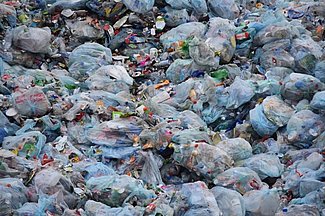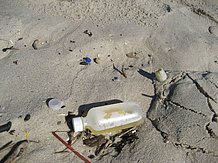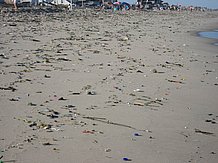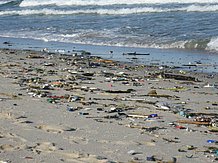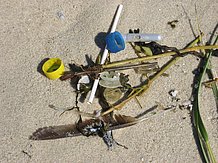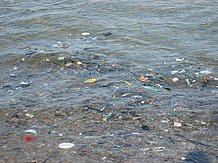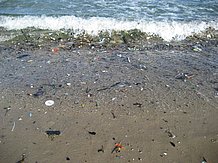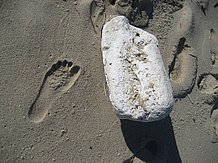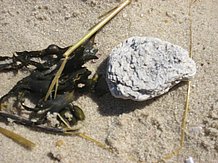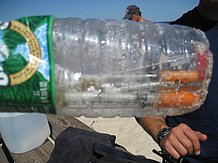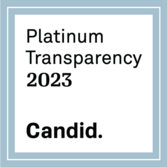EPA Announces National Strategy to Prevent Plastic Pollution
Preventing Plastic Pollution Nationwide
The US Environmental Protection Agency (EPA) released for public review and feedback the “Draft National Strategy to Prevent Plastic Pollution,” which “focuses on actions to reduce, reuse, collect, and capture plastic waste.” The EPA identified three key objectives for the strategy:
- Objective A: Reduce pollution during plastic production.
- Objective B: Improve post-use materials management.
- Objective C: Prevent trash and micro/nanoplastics from entering waterways and remove escaped trash from the environment.
Learn more about the strategy by watching an EPA webinar held on May 11, 2023, or by reviewing it online at https://www.epa.gov/circulareconomy/draft-national-strategy-prevent-plastic-pollution.
In comments to the US Environmental Protection Agency (EPA) on its “Draft National Strategy to Prevent Plastic Pollution,” COA noted that though well-intended, overall, the Strategy is disappointing, and specifically:
- is not bold and fails to convey the urgency of the crisis (the Strategy is voluntary).
- includes many of the same actions that were written years ago.
- contains no goals, no standards, no timelines, no enforcement measures, no oversight.
- fails to provide an interconnected framework of all federal agencies and their responsibilities and opportunities for plastic pollution reduction based on existing laws, regulation(s) and policies.
- includes options that can potentially increase/compound existing plastic waste problems such as composting and options for “disposal” which include plastic to fuel, incineration.
- is confusing and has no definition of plastic and meaning of “circularity” by mixing messages on disposal and chemical recycling.
- contains few unclear financial commitments or recommendations.
Given the highly polluting lifecycle of plastic, the resulting contamination of air, water, and land, as well as being a climate change accelerant, quickly reducing plastic production and waste through elimination and use reduction must be a top priority. Plastic pollution can only be addressed by bold, strong, enforceable actions. In short, the Strategy fails to provide leadership needed to meet this challenge.
- For EPA’s Draft National Strategy to Prevent Plastic Pollution: https://www.epa.gov/circulareconomy/draft-national-strategy-prevent-plastic-pollution.
- Click here for COA’s comments on EPA’s Draft Strategy.
Reducing Sources of Litter in the Delaware River

The goal of COA's Reduce Litter in the Delaware River project is to monitor litter and reduce the land-based sources of trash that contribute to pollution in and along the river, and that ultimately flow into the ocean. COA hosted a webinar about the project on Tuesday, December 21, 2021. Watch the webinar recording and view the presentation slides.
To learn more about the project and COA's findings, read the Litter Assessment along the Delaware River: Citizen Science Progress Report.
To get involved in COA's work along the Delaware River, email outreach@cleanoceanaction.org.
What is Marine Debris?
The National Oceanic and At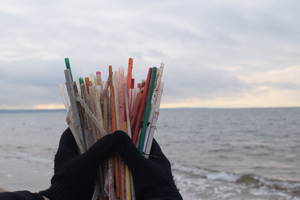 mospheric Administration (NOAA) and the US Coast Guard define marine debris as "Marine debris is any persistent solid material that is manufactured or processed and directly or indirectly, intentionally or unintentionally, disposed of or abandoned into the marine environment or the Great Lakes."
mospheric Administration (NOAA) and the US Coast Guard define marine debris as "Marine debris is any persistent solid material that is manufactured or processed and directly or indirectly, intentionally or unintentionally, disposed of or abandoned into the marine environment or the Great Lakes."
For more on the NOAA Marine Debris Program, visit: http://marinedebris.noaa.gov/marinedebris101/mdinfo.html
COA works with federal, state, and local elected officials, businesses, and environmental groups to find and stop sources of marine debris pollution and that pollution, dumping, and littering laws are enforced so that our beaches and oceans can become trash-free.
Want to Help?
Join us for our annual Beach Sweeps to join the thousands of public volunteers at over 70 New Jersey Beaches to remove trash, collect information on the trash, and advocate for a debris-free coastline!
Marine Debris Photos:
For examples of beach debris, click on these photos taken by Emily Hackett at a New Jersey Beach:
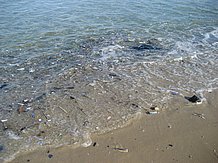
Litter and trash washing-up on beaches is an alarming, harms wildlife, ruins days at the beach, and threatens industries that depend on a clean ocean and clean beaches. The sources of the litter and debris is almost always from land: from both nonpoint source and point source pollution.
Marine debris results from people littering, overflowing waste collection areas. Rain and wind wash debris on streets, roadways, driveways, parking lots, lawns, and other surfaces to our waterways. Marine debris can also come from specific point sources. Debris from combined sewer overflow (CSO) pipes in northern New Jersey cities and the five boroughs of New York City can bring both untreated sewage and rainwater runoff from streets and parking lots to waterways in this region with between one tenth (0.10) and one quarter (0.25) of an inch of rain. This means litter, pesticides, fertilizers, as well as items washed down toilets, sinks, and shower drains -- sewage, in general -- are dumped without treatment into our rivers and bays, which lead to the ocean.
The New York/New Jersey Harbor Estuary Program Floatables Action Plan (FAP) is a multi-federal and state agency program that monitors for garbage slicks to prevent trash from escaping the harbor and fouling area beaches. The program is the responsibility of the US Environmental Protection Agency Region 2 office and US Army Corps of Engineers, as well as the NJ Department of Environmental Protection, NY State Department of Environmental Conservation, NY City Department of Environmental Protection, and the US Coast Guard. If the program was properly implemented, garbage "slicks" and wash-ups would be identified from routine surveillance by helicopter and cleaned-up by boats that skim debris off the surface of harbor waters.
